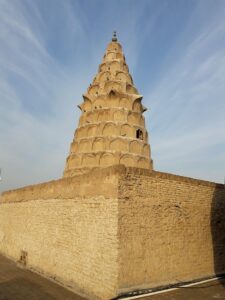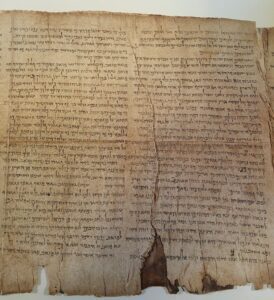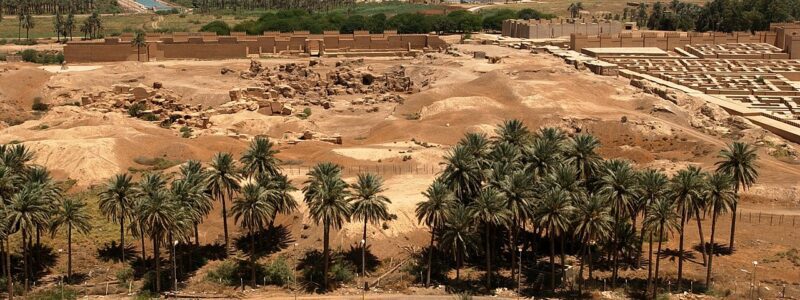Age of the Old Testament
Dating the Age of the Old Testament
The age of the Old Testament has been debated for the past two hundred years – it is a very controversial and very important topic. Traditionalists say the Old Testament was written many hundreds of years before Christ by the authors attributed to each book. For example, the Torah (first five books in the Bible) was written by Moses, the Psalms mostly written by David, Proverbs written by Solomon, and the major and minor prophetic books written by their respective prophet.
Recent handwriting analysis published in peer-reviewed journals lends credence to the traditional dating of the Old Testament books.
There would likely be little argument with the above attributions were it not for their prophetic content. Many of the books comprising the Old Testament contain very detailed prophetic announcements concerning future events. The belief that each work was written before the events occurred would mean these men of God actually were given knowledge of future events.
Revisionists and liberal theologians would rather not have to believe in actual prophecy. They say the whole Old Testament – including the five books of the Torah – was written after the Jews returned from their Babylonian captivity, probably during the second century before Christ. Not only that, but these same revisionists suggest the books were written by multiple authors, with each author adding their text onto the others.
Revisionists claim the “prophecies” were actually only a recount of history written by unknown scribes hoping to mythologize Jewish history. These scribes were hoping to support the Jewish narrative that they were the chosen people of God when in fact they are just another tribe out of many in the Middle East hoping to stake their claim to the land.
This controversy is particularly important for those Old Testament books containing specific prophecies regarding the yet future Messiah. Some of the most specific prophecies concerning the Messiah originate in the Book of Isaiah.
The Book of Isaiah
Perhaps no book is more bitterly debated than the Book of Isaiah. Traditionally, Isaiah is thought to have been written in the eighth century before Christ, largely during the reign of King Hezekiah. Revisionists and liberal theologians, on the other hand, teach that the work is the result of multiple authors, perhaps up to five. It was likely written after the return from Babylon probably in the second or third century before Christ.
The Book of Isaiah is unique for another reason. We have an intact copy of the entire book found among the Dead Sea Scrolls. This copy is on public display in Jerusalem in a special museum dedicated solely to this remarkable find. It was found by Carbon-14 to originate from the second or third century before Christ – it cannot be any later. This means the remarkable prophecies concerning the future Messiah in Isaiah 52-53 were written centuries before Christ appeared to fulfill them.
As a side note, the book is written in common Hebrew that can be read by the Hebrew-speaking population of Israel today. Hebrew, unlike other languages, has not changed significantly over the past two thousand years. An average English-speaking person would be unable to read medieval English from only a few hundred years ago, and there was no English two thousand years ago.
Bias Against Fulfillment of Prophecy in Dating of Age of the Old Testament
Perhaps the reason why liberal religious theologians can not bring themselves to believe in the traditional origin of the Old Testament books is due to its prophetic component. For example, The book of Isaiah is traditionally dated to the eighth century B.C. but this dating has presented a problem to liberal theologians.
It is usually considered to have at least two authors with the second author responsible for Isaiah 40 onward. It is based upon the alleged fact that the prophet could not actually forecast the future, and so the writing has to be dated after the prophetic events.
For example, Isaiah prophecies by name a future King Cyrus and the destruction of Babylon over 150 years in advance. This is supported by supposed differences in writing style throughout Isaiah, with each writing style belonging to a different author.
But is this a legitimate criticism or is it just grasping at straws? Isaiah wrote for a long time period – probably about 60 years, throughout five successive kings. All authors have a change in writing style throughout their lifetime.
Research has been done on this topic. Tomorrow’s World magazine had an article concerning changes in writing style noting,
The fact of the matter is that an accomplished author’s writing style should and will change through the years… [L]iterary analysis has claimed that Paul only wrote five of his 14 epistles, that Ian Fleming didn’t write James Bond, and that the works of Graham Green and G.K. Chesterton had “more than one author.
It has also been claimed that James Joyce’s Ulysses had to have been written by multiple authors due to the changes in writing style.
These charges are, of course, ridiculous, and show the bias of Isaiah’s literary criticism alleging multiple authors.
But there is good evidence for the assertion that the Book of Isaiah was written by only one author; namely, Isaiah.
Ancient classical historians and early writers, back to about 200 B.C., give Isaiah full attribution for the book – not only for just half of it. It is interesting – and so typical – that more than 2,200 years on, we today fancy ourselves more knowledgeable than those who lived close to such an ancient time period.
There is actually stylistic evidence that Isaiah wrote the entire book. Rachael Margalioth’s The Indivisible Isaiah provides evidence for this attribution and how the book helps establish the traditional age of the Old Testament.
Eames goes on to note,
One of the major theories for Isaiah is that the latter half was written by a Babylonian captive around 540 B.C. Yet this is ridiculous when one considers the text within the latter half of Isaiah. Accurate descriptions are given of the land of Israel, including descriptions of numerous native trees—landscape that a captive in Babylon, by then at least 46 years into captivity, would not have been able to portray. Furthermore, the latter half of Isaiah describes the requirement for sacrifices at the temple. This, of course, would be redundant if it was admonition written in 540 B.C., after the destruction of the temple. Further, this text criticizes Canaanite idolatry, as opposed to Babylonian idolatry—a topic that by that time would have been rather redundant.
Isaiah and Christ
We have a complete version of Isaiah from the Dead Sea Scrolls dating to about 125 B.C. This places Isaiah’s prophetic texts concerning the Messiah – especially found in Isaiah 53 – well before their fulfillment. The greatest prophecies of Isaiah concerning the future Messiah are well established to have been written well before Christ’s birth in Bethlehem.
There are also many prophecies in Isaiah that are waiting to be fulfilled. Isaiah himself acknowledged that the major part of his prophecies is for the “end-time. For example, in Isaiah 30:8, “time to come” should read “latter day.”
Josephus was a Jewish sage writing in the first century and noted that King Cyrus when he came on the scene in the fifth century B.C., actually read of the prophecies in Isaiah concerning him where he is specifically named. Furthermore, Josephus also wrote that Alexander the Great was shown the prophecies concerning his reign in the Book of Daniel when he surrounded Jerusalem in the fourth century B.C. – and then showed favor to the Jews.
The Book of Ezekiel

Ezekiel’s Tomb – By Farhadmirza – Own work, CC BY-SA 4.0, Link
The Book of Ezekiel has many dates given throughout the book for when certain visions were received. Ezekiel wrote from the Babylonian captivity during the early sixth century B.C…
The major concern of modern liberal theologians continues to be with the prophecies. They insist Ezekiel had to have been written sometime during the fourth to third centuries B.C. to account for the amazing prophecies concerning the downfall of Tyre.
Incidentally, Ezekiel was a contemporary of the prophet Daniel as both of them were in Babylonian captivity. Ezekiel even mentions Daniel in Ezekiel 14:14, 14:20, and 28:3. There has of course been considerable controversy whether the Daniel mentioned in Ezekiel is the same Daniel in the New Testament. However, at least some scholarly research posits the Prophet Daniel is being referenced by Ezekiel and not some other personality. Making Daniel a contemporary of Ezekiel poses a particularly difficult problem for those wishing to place Daniel’s writing to a later date as the dating for Ezekiel seems certain.
Since Ezekiel is grounded in the sixth century B.C., liberal theologians suggest the many prophecies contained within its pages were later appended by well-meaning scribes. This seems unlikely as ancient Jewish scribes would never alter Scripture. Furthermore, should one unscrupulous scribe attempt to do so, their machinations would not have escaped notice by other scribes and rabbis.
Josephus confirms that the entire Old Testament Scripture was finished during the fifth century B.C. This feat was accomplished by the Biblical Ezra, putting an end to any additions or subtractions from the recognized Scripture. There was a strict, fully established Jewish religious authority governing Scripture to pass it from generation to generation without change. These were some of the rules to enable copying of Scripture without error by scribes
- They could only use clean animal skins, both to write on, and even to bind manuscripts.
- Each column of writing could have no less than forty-eight, and no more than sixty lines.
- The ink must be black and of a special recipe.
- They must verbalize each word aloud while they were writing.
- They must wipe the pen and wash their entire bodies before writing the word “Jehovah,” every time they wrote it.
- There must be a review within thirty days, and if as many as three pages required corrections, the entire manuscript had to be redone.
- The letters, words, and paragraphs had to be counted, and the document became invalid if two letters touched each other. The middle paragraph, word, and letter must correspond to those of the original document.
- The documents could be stored only in sacred places (synagogues, etc).
- As no document containing God’s Word could be destroyed, they were stored, or buried, in a genizah – a Hebrew term meaning “hiding place.” These were usually kept in a synagogue or sometimes in a Jewish cemetery.
The idea that some rebellious scribe could sneak prophecies into ancient Scripture after the prophetic events occurred seems ludicrous.
The Book of Amos
Amos is certainly not as well known as Isaiah among Christians, but he is an easy prophet to date. Amos not only lists the kings that lived during his lifetime, but he also mentions an “earthquake.” Amos notes that he started his writing about two years before “the earthquake” (Amos 1:1).
The earthquake must have been a memorable one to be important enough to serve as a dating mechanism for his prophecies. We know that such as massive earthquake took place throughout the country in 760 B.C. This destructive event was witnessed in multiple archaeological sites with layers from this time showing collapsed floors and leveled buildings. It is estimated that the quake would be classified as having a magnitude of 8.2 – a truly massive event.
Amos also describes Israel as being in a time of prosperity before the collapse of the nation toward the end of the eighth century B.C. Hebrew words are used throughout Amos’ narrative that is consistent with the traditional dating of the text.
The downfall of Israel would occur only several decades after Amos penned his prophecies.
The Book of Jonah

By Pieter Lastman – IAFT8IfCTfplRQ at Google Cultural Institute maximum zoom level, Public Domain, Link
Jonah is a well-known Prophet due to the famous tale of his being swallowed by a “great fish” and then vomited out on land three days later. The narrative is used by Christ centuries later when describing how he would come back to life on the third day after his crucifixion.
Revisionists suggest the account of Jonah was written by some motivated scribe about 450 BC in an “angered response” to Ezra and Nehemiah forbidding interracial marriage with Gentiles (something also prohibited under Mosaic law).
Jonah does provide some details suggesting he was familiar with the city itself, and not just writing about an event alleged to have occurred centuries after Ninevah’s destruction. For example, Jonah notes that the city was massive, being a “three days journey” (Jonah 3:3) from one end to the other. Modern archaeological excavations have documented the city – plus its suburbs – to be about sixty miles across, taking about three days walking time to navigate. The city occupied about 1,730 acres giving plenty of room for the population Jonah ascribed of about 120,000 people (Jonah 4:11).
The writing of Jonah also suggests authenticity. There are no Persian words as might be expected from a book written after the return from Persian captivity. Furthermore, Jonah used several Aramaic words consistent with a remote date as well.
The Book of Haggai
The Book of Haggai is one of the least contested books in the Old Testament. Virtually all scholars date the work to its ascribed date of 520 BC. The important aspect of this dating is the description of purity laws (Haggai 2:11-14). The problem is that revisionists believe the part of the Torah which gives these purity laws was not written for another 100 years. Haggai thus helps to date the earlier dating of the Torah and not written by a fraudulent “P writer.”
The age of the Old Testament prophetic books is established to more likely be ancient – written during their traditional timeframe and not written hundreds of years after prophetic events have occurred.
Summary of Age of the Old Testament
Revisionists have tried to re-date the age of the Old Testament prophetic books to much later than their traditional dates, and attribute the books themselves to multiple unknown later authors. Those who make these assertions have little evidence upon which to base their redating other than trying to absolve themselves of having to believe in real prophecies.
In short, there is no hard evidence to suggest that any of these books could not have been written by their traditional authors at their traditional dates. There is also much evidence that suggests that the original dating and attributions are correct.
God declares that he knows “the end from the beginning, and from ancient times the things that are not yet done, saying, My counsel shall stand, and I will do all my pleasure (Isaiah 46:10).





